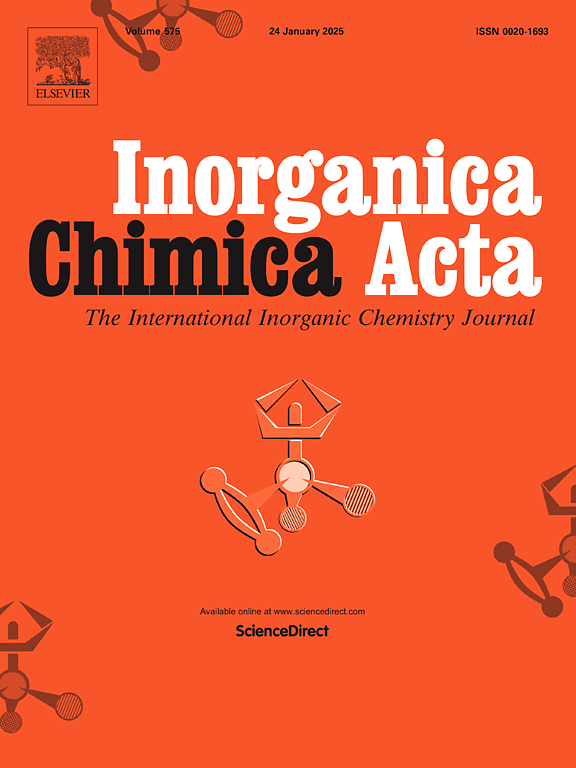A highly cytotoxic Pd(II) saccharinate complex with tris(2-pyridylmethyl)amine acting through mitochondrial and ROS-induced DNA damage
IF 2.7
3区 化学
Q2 CHEMISTRY, INORGANIC & NUCLEAR
引用次数: 0
Abstract
A novel Pd(II) complex containing saccharinate (sac) and tris(2-pyridylmethyl)amine (tpma) [Pd (sac)(tpma)](sac)⋅1.5H2O was synthesized and characterized by IR, ESI-MS, NMR spectroscopic methods, DTA/TG thermal analysis methods and single-crystal X-ray diffraction.
The cationic Pd(II) complex displayed a distorted square planar coordination geometry with a N atom of sac and three N atoms of tpma, while another sac remained outside the coordination sphere as a counter ion. The sulforhodamine B (SRB) cell viability assay showed that the Pd(II) complex was found to be highly cytotoxic against four human cancer cell lines A549 (lung), HT29 (colon), MCF7 (breast), and LNCaP (prostate) in comparison with cisplatin. The complex demonstrated a remarkable selectivity toward MCF7 cells. Mechanistic studies indicated that the complex induced apoptosis in MCF7 cells based on annexin V/PI and caspase 3/7 assays. In addition, significant mitochondrial depolarization and increased intracellular ROS (reactive oxygen species) generation were observed in MCF7 cells exposed to the Pd(II) complex. The complex also caused ROS-induced DNA double strand breaks as evidenced by the γ-H2AX assay.

求助全文
约1分钟内获得全文
求助全文
来源期刊

Inorganica Chimica Acta
化学-无机化学与核化学
CiteScore
6.00
自引率
3.60%
发文量
440
审稿时长
35 days
期刊介绍:
Inorganica Chimica Acta is an established international forum for all aspects of advanced Inorganic Chemistry. Original papers of high scientific level and interest are published in the form of Articles and Reviews.
Topics covered include:
• chemistry of the main group elements and the d- and f-block metals, including the synthesis, characterization and reactivity of coordination, organometallic, biomimetic, supramolecular coordination compounds, including associated computational studies;
• synthesis, physico-chemical properties, applications of molecule-based nano-scaled clusters and nanomaterials designed using the principles of coordination chemistry, as well as coordination polymers (CPs), metal-organic frameworks (MOFs), metal-organic polyhedra (MPOs);
• reaction mechanisms and physico-chemical investigations computational studies of metalloenzymes and their models;
• applications of inorganic compounds, metallodrugs and molecule-based materials.
Papers composed primarily of structural reports will typically not be considered for publication.
 求助内容:
求助内容: 应助结果提醒方式:
应助结果提醒方式:


